Black-eyed susan (Rudbeckia hirta) is such a popular wildflower it has been added to many cultivated flower gardens. This post compares the Black-eyed susan with another coneflower commonly called Tall coneflower, Green-headed coneflower, or Cutleaf coneflower (Rudbeckia laciniata).
Have you ever looked closely at Black-eyed susan’s leaves? The lower leaves are broadly ovate with palmate veins running the length of the leaf. The leaf margins are roundly toothed.
As the plant grows taller, its leaves become more lanceolate with more sharply toothed margins . . .
The photo above shows these lance-shaped leaves as well as some unopened flower heads. Watch how the Black-eyed susan’s inflorescence opens . . .
The outer ray flowers of this composite flower open first. Then, the inner disk flowers begin opening until we see the full inflorescence blooming.
Black-eyed susan is one of many flowers with the common name of “coneflower.” You can see the center disk looks like a dark brown cone. After the seeds mature, the head of the flower (the cone) remains to stand through most of the winter season.
Let’s look at another coneflower. As mentioned above, it has several common names alluding to the shape and color of its flower head and its leaves.
This is Tall coneflower (Rudbeckia laciniata). Its lower leaves are also broadly ovate, with palmate venation and rounded toothy margins. As this plant grows taller, its leaves change in shape, just as the Black-eyed susan’s leaves change. In fact, sometimes the Tall coneflower leaf looks divided into three or five (possibly seven?) leaflets. These compound leaves give the impression of being “cut” — which explains the “Cutleaf coneflower” common name along with the “laciniata” scientific name. The petiole of these larger leaves is somewhat grooved.
Tall coneflower can grow very . . . well . . . TALL (up to ten feet). This next photo illustrates some Tall coneflower plants which have fallen over with the weight of their leaves and blossoms. Note the varying leaf shapes.
The leaves near the top of the plant are more lanceolate — just like the Black-eyed susan’s upper leaves.
The leaf margins are also more sharply toothed than the lower leaves.
The above photo shows the composite flower’s ray flowers just beginning to unfold — in a manner quite similar to the Black-eyed susan.
Now we can see why this plant is also called Green-headed coneflower. Its center disk remains green — even as its seeds begin to mature.
This last photo shows the Tall coneflower’s dried seed heads. You can see the lengthy cone as well as how the seeds have fallen away from a large part of the receptacle of one of the heads.

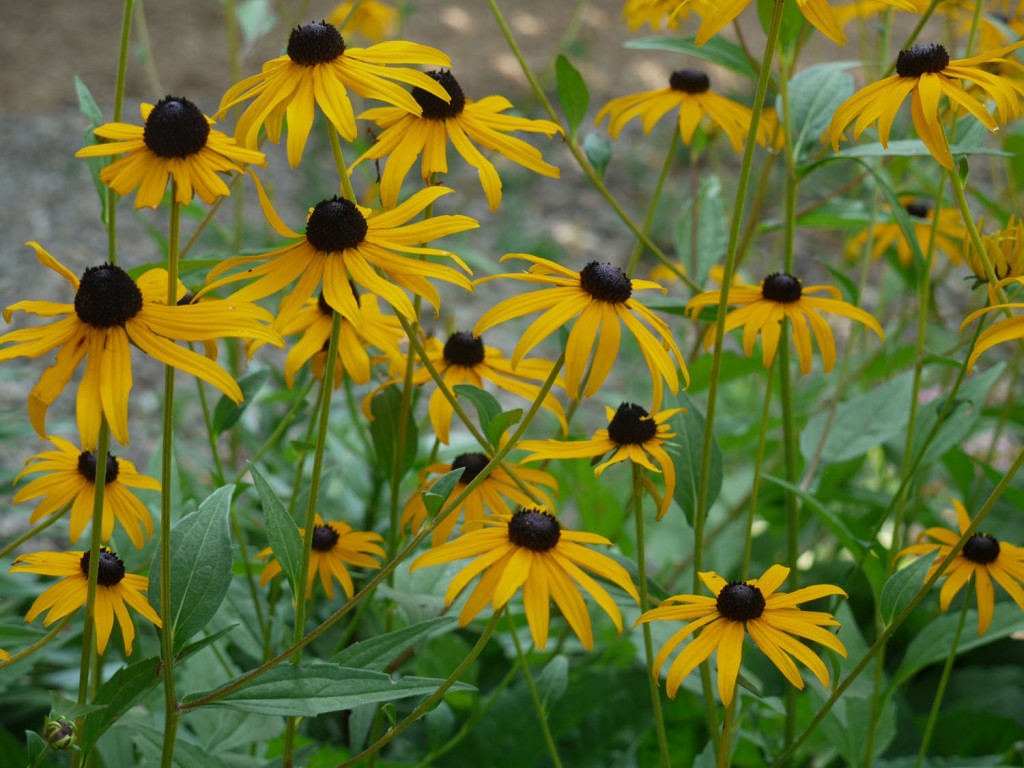
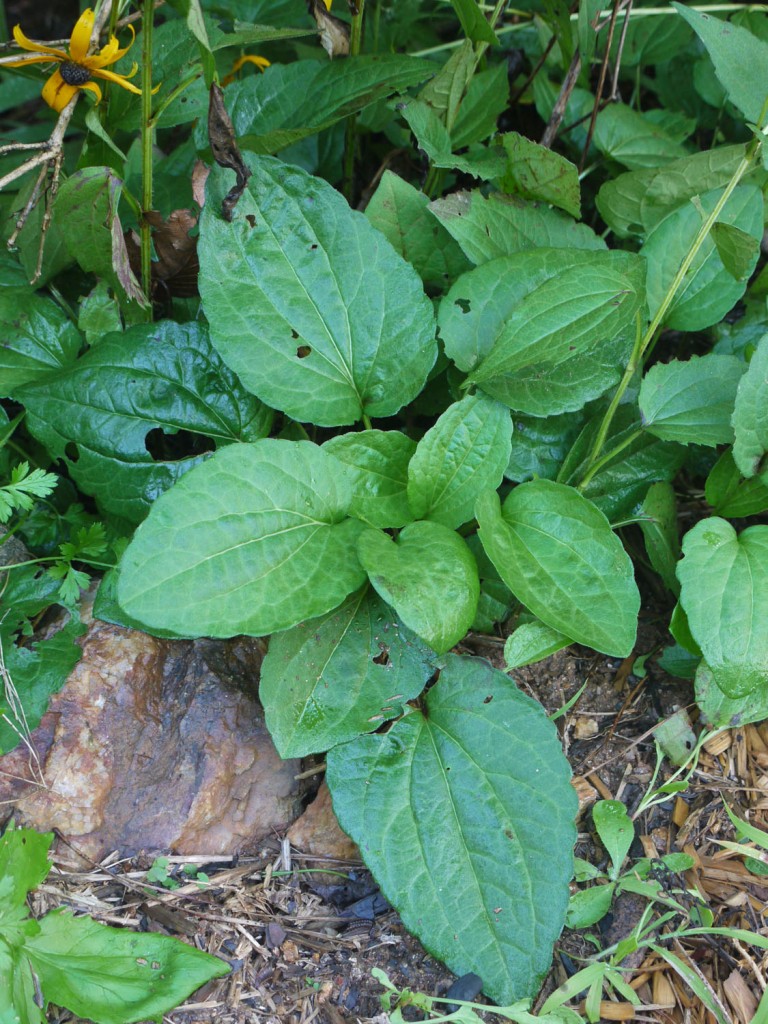


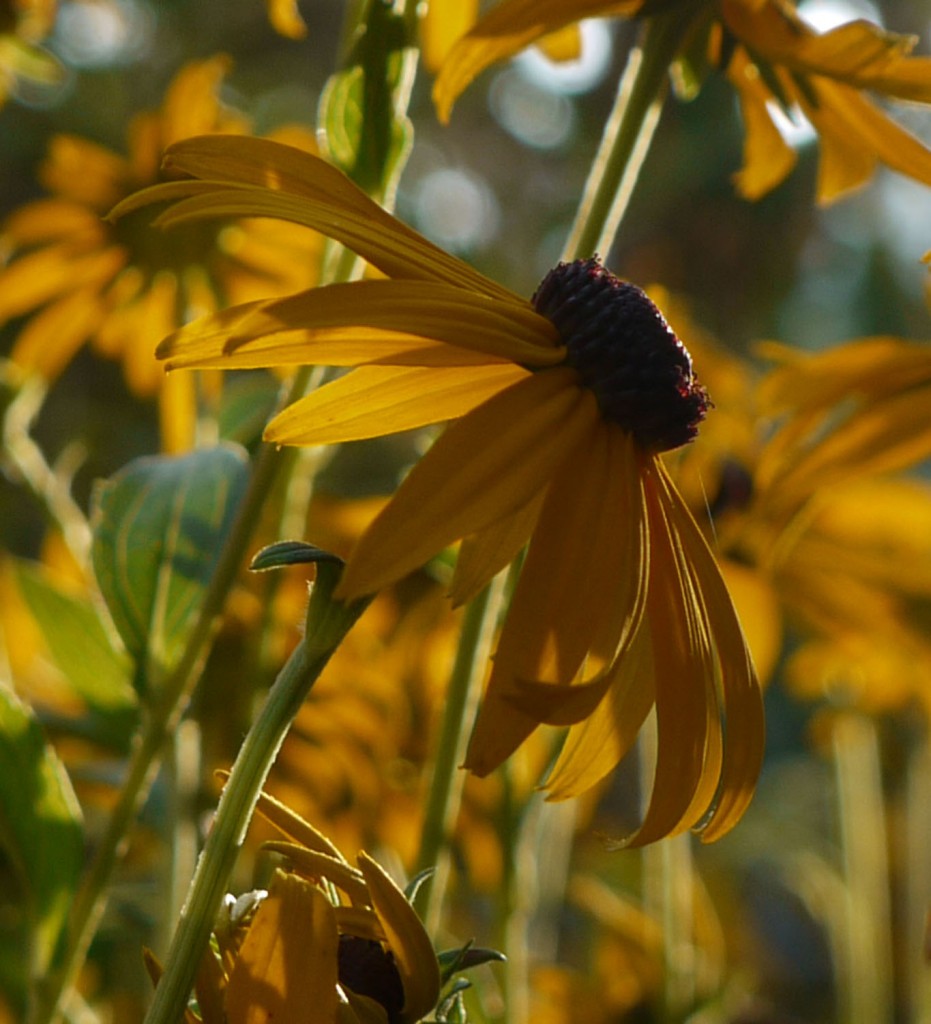
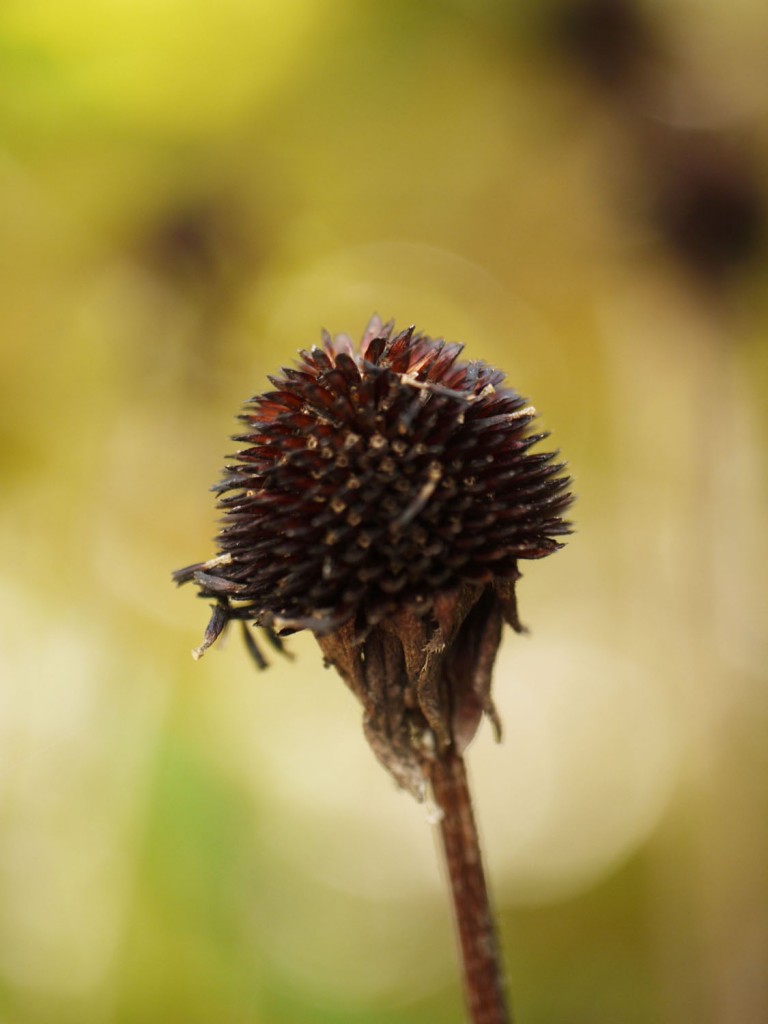
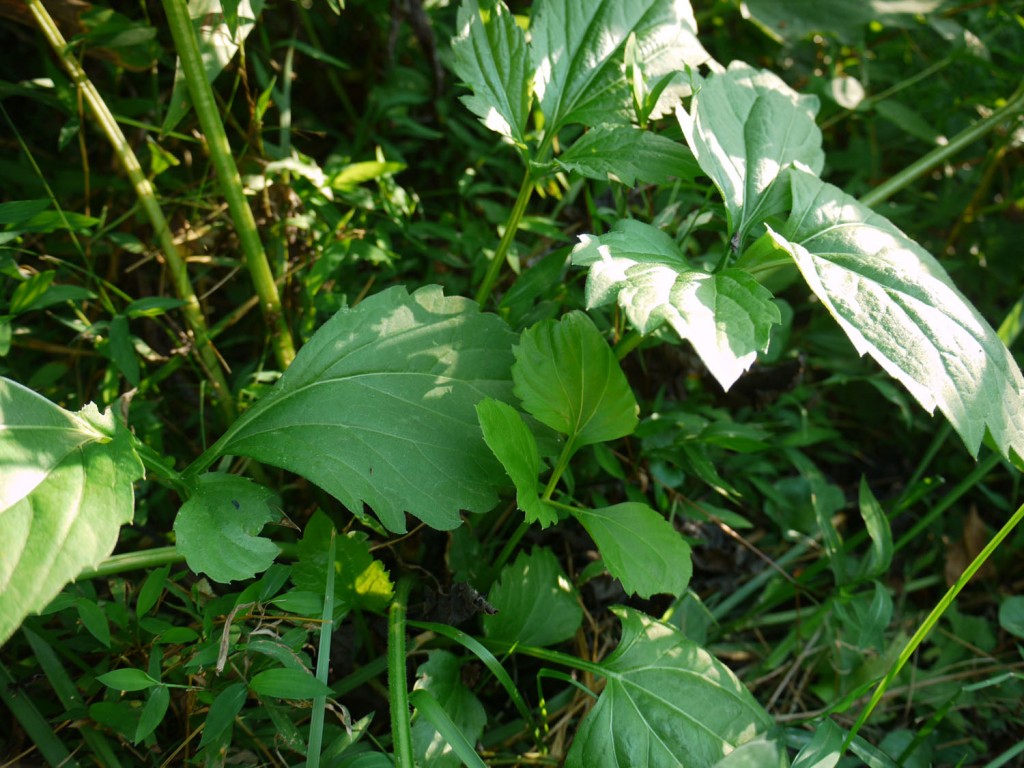
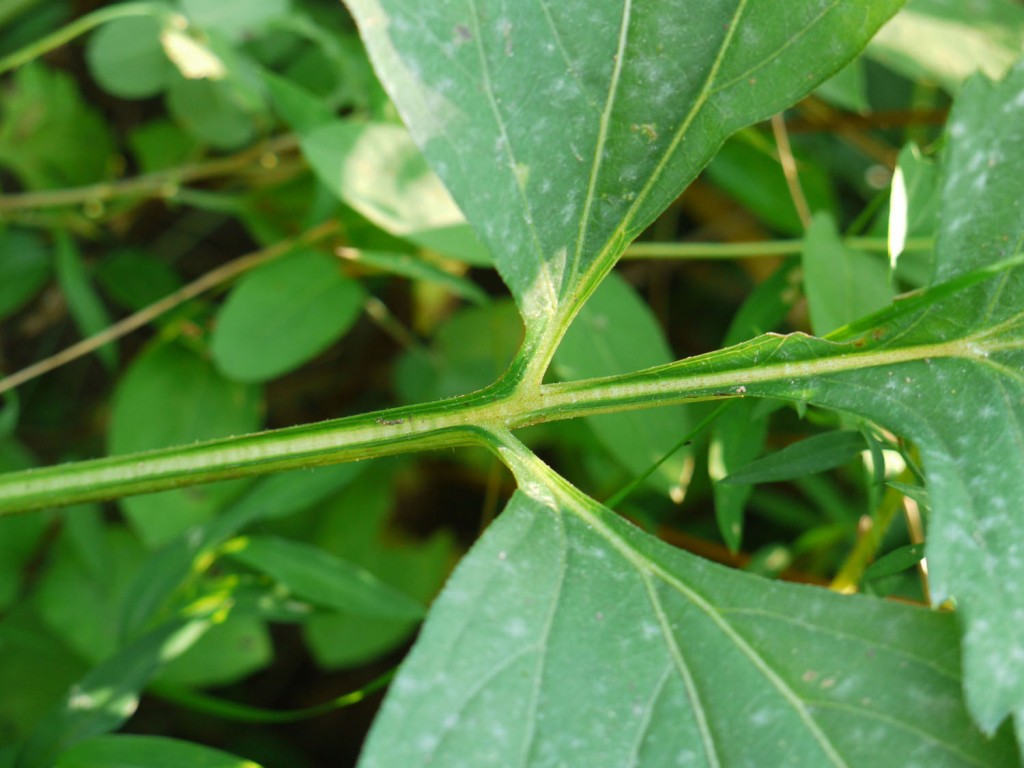

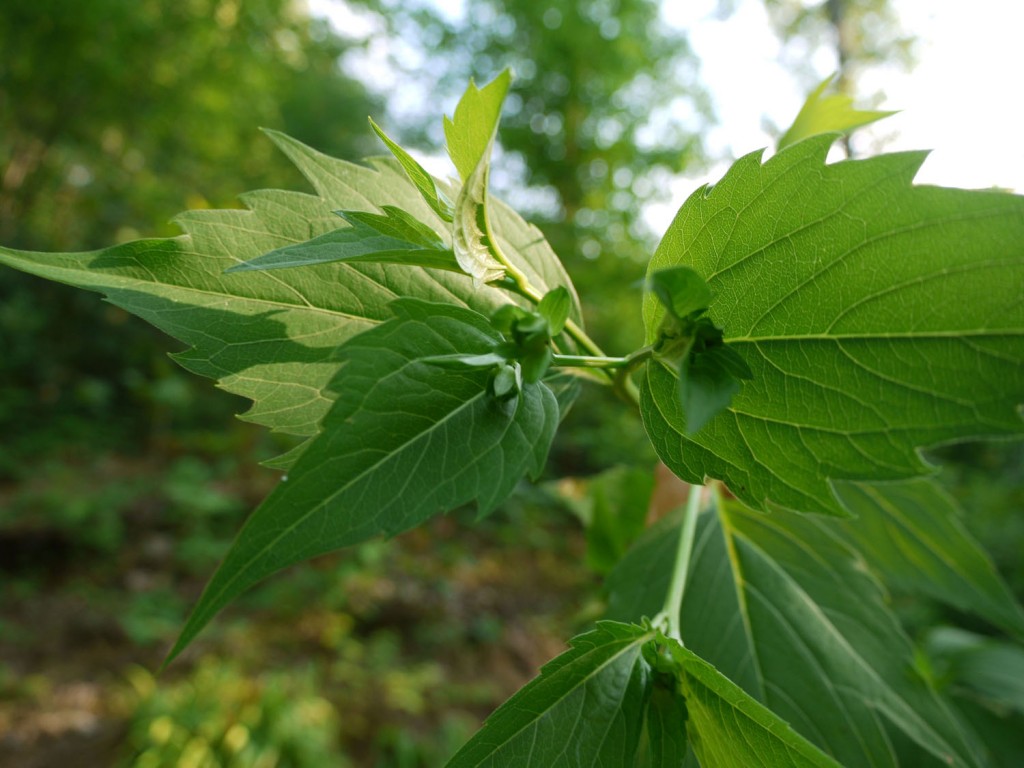
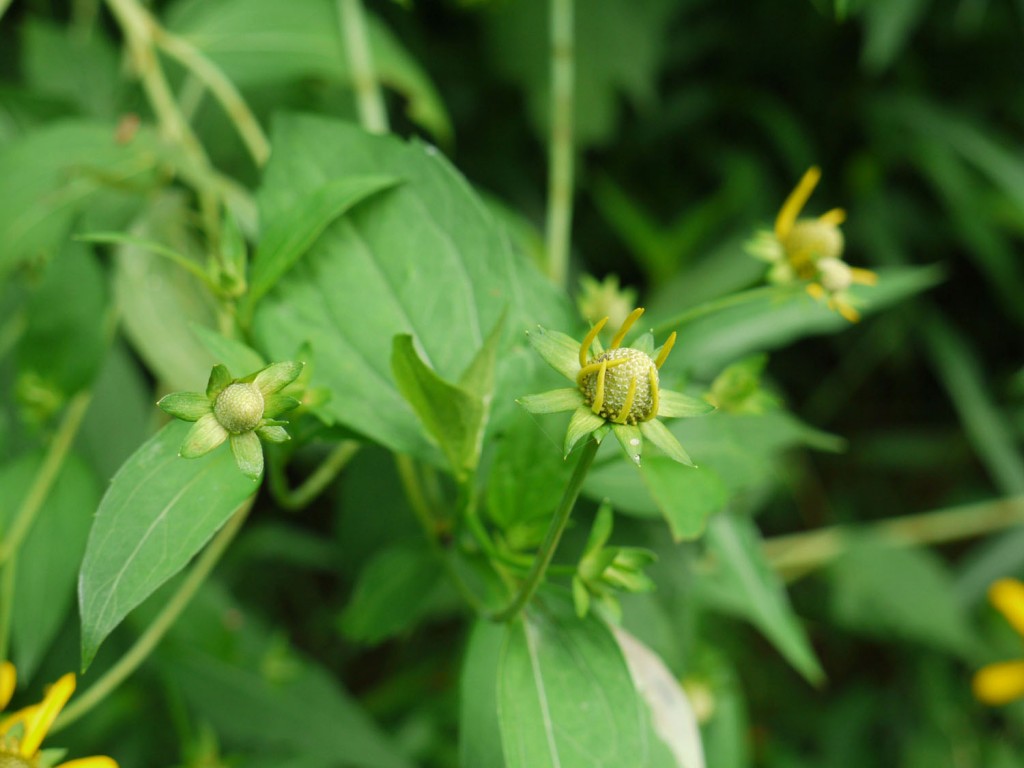
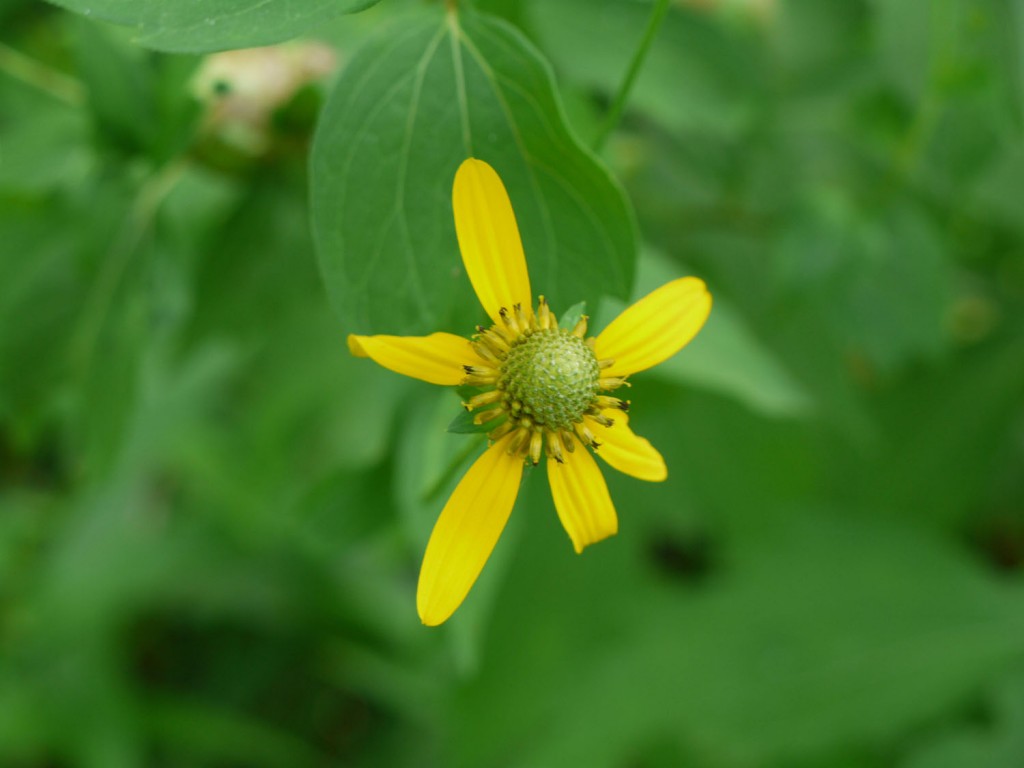


Has Rudbeckia laciniata ever been known as R. monstrosa?
I was sent a start of a plant that the gent called Rudbeckia monstrosa, but searching many resources, I can not find R. monstrosa.
He says his copy of “Botanica” labels it this way.
But it really does look like R. lanciniata
I have not heard of the name “Rudbeckia monstrosa,” Dea. Perhaps the tall size of this plant has led someone to call it “monstrous.”
While gathering Rudbeckia from the field I have noticed some slightly larger with smooth leaves. Could you tell me if this is a different type? Most have fuzzy leaves and stem but maybe 2 out of 20 will be smooth. thanks
This could easily be a “variation” for the plant. That’s like when a plant typically has green leaves and some of the plants then develop bi-color leaves even though it is the same plant. What you are seeing is probably not a different species.